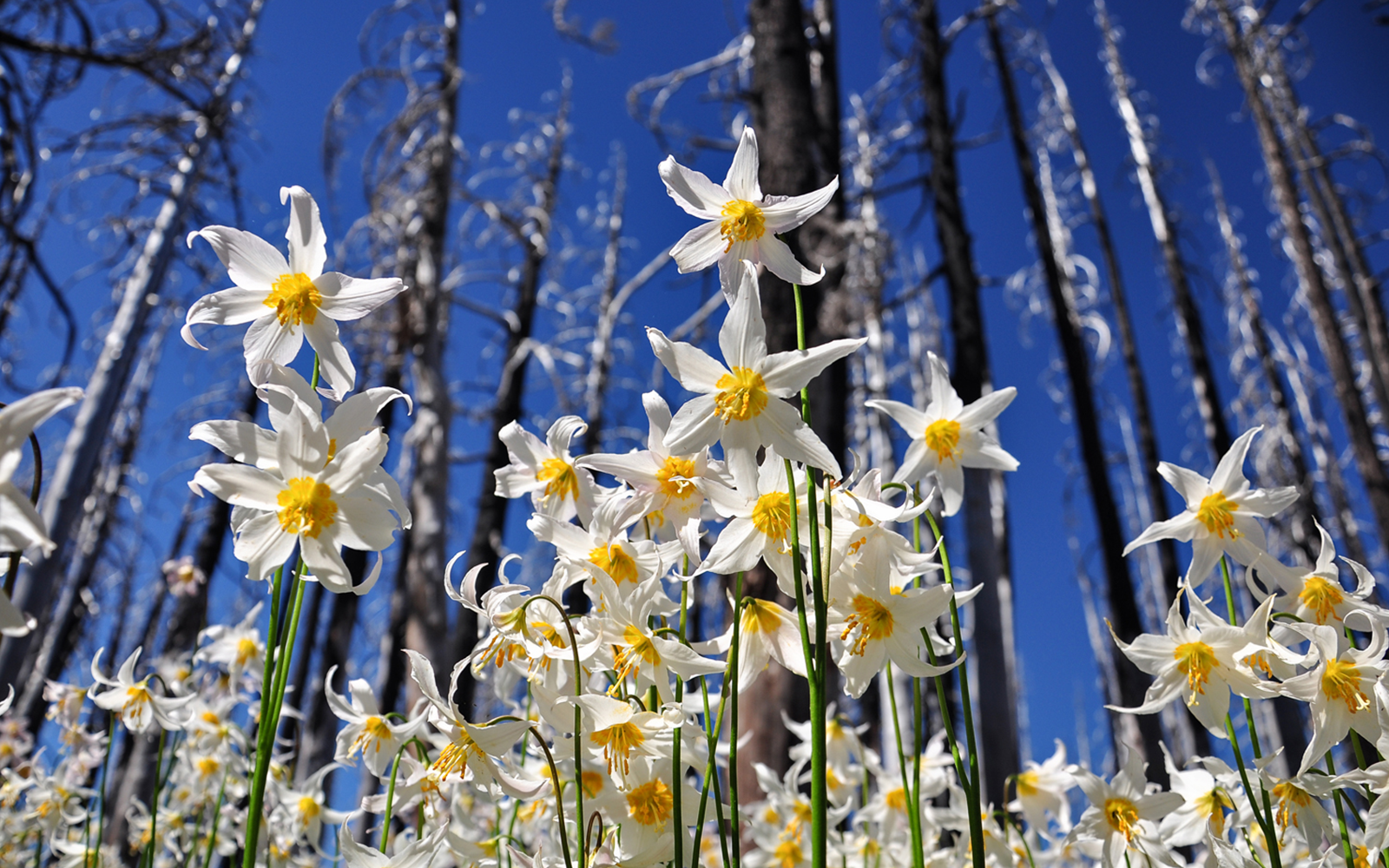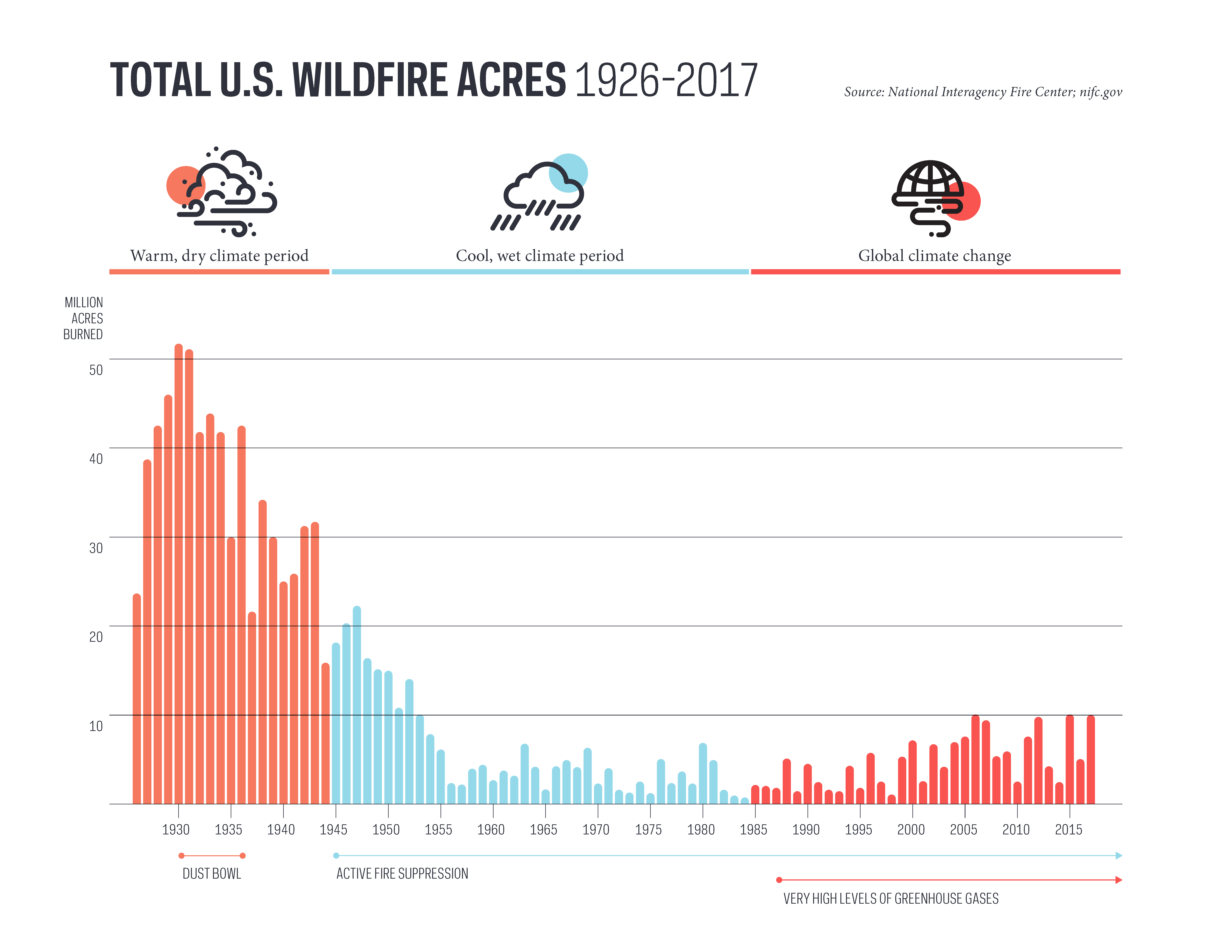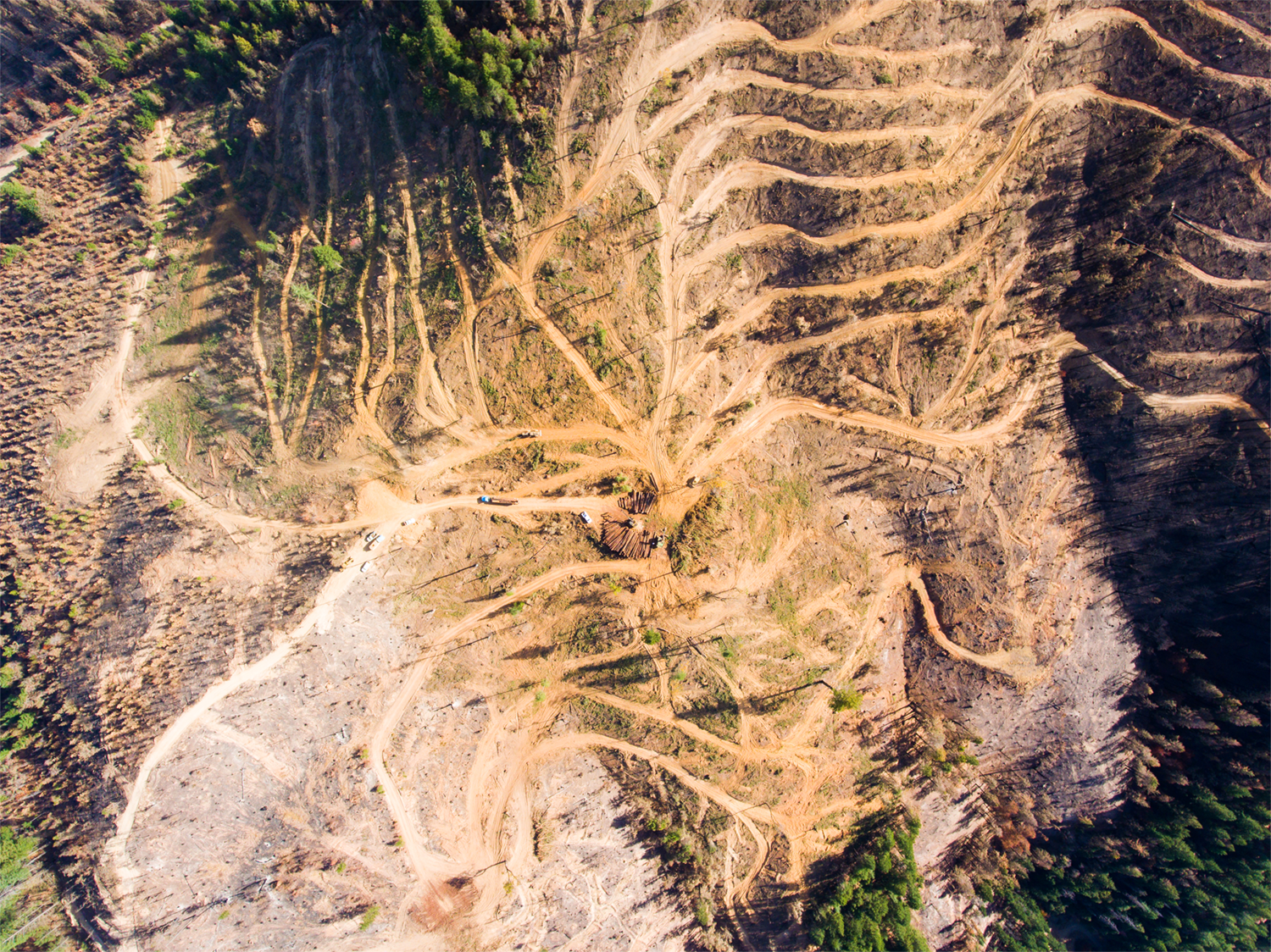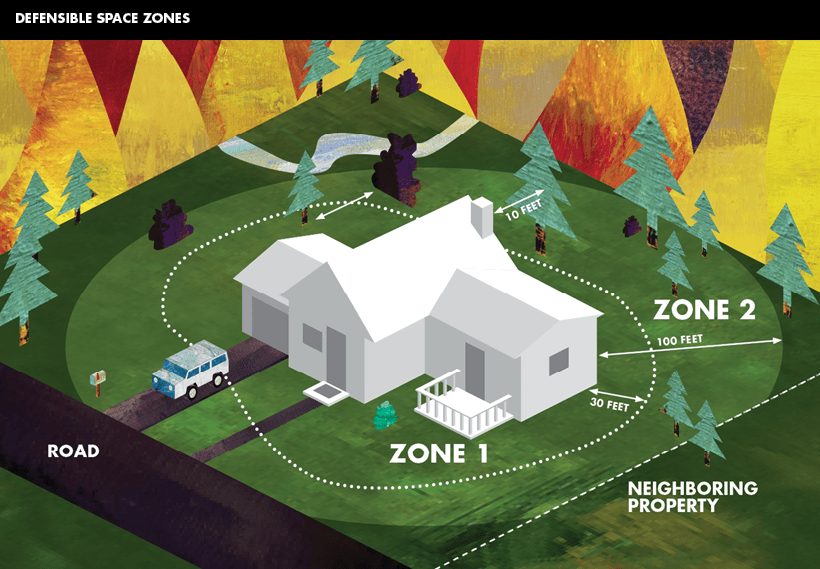
Wildfires in the West
Wildfire has always been a necessary and vital part of the forest ecosystems of the American West, and the plants and animals that call these forests home have evolved to co-exist and thrive with all types of wildfire. The native peoples of the Northwest used fire for millennia to maintain food, medicine, and wildlife populations, but traditional burning practices were suppressed and actively fought against upon the arrival of European settlers.
Fire suppression grew to industrial proportions in the mid-20th century and was most effective during the cool, wet climate period from the 1940s to the 1980s. Today, climate change is bringing hotter, drier conditions to these forests, leading to more fire activity and presenting numerous challenges to communities throughout the West. The media and many politicians often assert that climate change is causing “record wildfire seasons,” which is only true when compared to the last few decades. In fact, western forests today actually burn far less than they did prior to the mid-20th century (see FIGURE #1).

Even though fire has always been an integral part of these forests, 21st century wildfires pose unique challenges to communities as there are now over 40-million homes in fire-prone landscapes throughout the West. These challenges are very real and deserve thoughtful, science-based policy solutions; however, we must always keep in mind that even the largest and most intense wildfires are not “disasters” for forest ecosystems. For nearly a century, our elected officials, the media, and timber interests have told us that fire destroys forests, kills wildlife, and endangers communities.
Leaders from both political parties have responded to people’s fear of fire by promising to reduce “catastrophic fire” through “hazardous fuels reduction” and “active management.” This coded language often calls for aggressive logging far off in the backcountry, which, according to the best available science, does not reliably prevent wildfires or improve the safety of our communities.
“Salvage” Logging
= Post-fire Clearcutting
After a fire season, the alarmist language portrayed in media and echoed by land managers conceals the real story, which is that forests are neither “destroyed” or “devastated” by wildfires. In fact, they evolved with it as a necessary part of a healthy ecosystem; plants and wildlife thrive after fires.
The forest really does not need human help to “recover” after a fire because it’s a natural part of a forest’s lifecycle, it can do that just fine on its own. Insects, birds, and native pioneer plants move right in after a fire. In fact, certain beetles and the woodpeckers that feed on them are drawn by the smoke to still-smoldering forests where they will enjoy a life among charcoal trees that they are perfectly suited for!
Unfortunately, as with supposed fire-prevention logging, land managers often tout the forest-restoration potential of “salvage” logging. In fact, this post-fire logging does nothing to help the forest heal. Instead, it can set back natural recovery into healthy, mature forest by decades.

As if so-called “salvage” logging weren’t bad enough ecologically, it also causes the release of the carbon that forests store in their wood and soil. Only a small percentage of wildfire smoke is carbon; the vast majority is water vapor. Burned forests continue to sequester carbon quite effectively, but not if they’re logged.
Nevertheless, logging is all the rage after fires, as industrial foresters and the land-management agencies try to scrape the land for every last bit of profit before the burned trees lose their value (their monetary value that is—burned trees are worth their weight in gold, ecologically speaking).
A New Direction for Wildfire Policy
In the age of climate change, we must re-examine our relationship with fire and chart a new course towards coexistence with fire in wildlands.
In recent decades, scientists around the world have concluded that we must rapidly reduce fossil fuel emissions if we hope to prevent catastrophic climate change; however, scientists are also telling us that to effectively mitigate climate change we must also remove vast amounts of carbon from the atmosphere by better protecting forests. Forest ecosystems have helped regulate atmospheric carbon levels for thousands of years, and today they play an integral role in stabilizing the global climate. In fact, the forests of the Pacific Northwest are globally significant for their ability to sequester carbon and keep it safely stored for centuries, but only if protected from industrial logging (e.g. clearcutting, aggressive thinning, post-fire logging) (see page 3 in the Oregon Global Warming Commission’s Forest Carbon Accounting Project Report from 2018).
Here in the West, we have a unique opportunity to contribute to the global fight against climate change by managing local forestlands for carbon storage and climate resilience. Intact, unlogged forests not only store vast amounts of carbon, but also help mitigate the impacts of a warming planet by providing cold, clean water for our communities, salmon, and other wildlife. Protected forests allow plants and wildlife to adapt to the impacts of a changing climate, and they buffer our communities from extreme weather events such as winter storms and summer droughts.
After decades of failed wildfire policy, we must re-examine our relationship with fire and move towards solutions that will help us co-exist with more fire on the landscape. In recent years it has become increasingly clear that we cannot log our way out of this problem, but there are many things we can do to mitigate the risks that fire poses to our communities.
Below are the TOP FIVE SOLUTIONS that individuals and communities can do to bolster our resilience to wildfire in the age of climate change:
SOLUTION #1 | Protect homes and communities by building resilience to wildfires and smoke.
- By focusing our wildfire policies on home safety and community preparedness, we can help front-line communities adapt to climate change and co-exist with 21st century wildfires.
- The most effective pathway to fire co-existence is to retrofit homes to be more fireproof, and educate our communities to be more “firewise” (see FIGURE #2):
- install fire-resistant roofing, rain gutter guards, ember-proof vents, and other home improvements
- create “defensible space”within 60-100 ft of homes (e.g. regularly thin small trees, remove shrubs, cut grasses, make sure no branches are touching structures)
- prevent human-caused fires during fire season, especially in forests near communities
- limit new development in fire-prone areas, which is where the vast majority of human-fire conflicts occur
- Neighbors need to work together and with their local fire service to achieve greater wildfire safety. State fire agencies such as CalFire and the Washington Department of Natural Resources should also expand the programs they offer to train communities how to be firewise.
- To help our communities become more resilient to the impacts of wildfire smoke we can build public smoke shelters and work with homeowners and renters to install advanced air filtration systems. It is especially important that we provide these resources to low income communities who are often the most vulnerable to the health impacts of smoke.

SOLUTION #2 | Take bold action to fight climate change by reducing fossil fuel emissions and transitioning to a green economy.
- A hotter and drier climate is driving increased fire activity in the West, endangering communities in re-prone areas. The sooner we transition from fossil fuels, the sooner we can stabilize our climate.
- One of the best ways to reduce fossil fuel emissions is to support alternative sources of energy such as wind, solar, and other carbon-neutral renewables. If we hope to avoid the worst effects of climate change, we also have to stop the development of new fossil fuel infrastructure, such as pipelines and export terminals.
- We must ensure that our transition to a green economy is a just transition that creates vibrant communities and employment opportunities that are shared equitably.
SOLUTION #3 | Work with fire to reap its social and ecological benefits (“Ecological Fire Management”)
- We should allow fires to burn in remote backcountry areas far away from communities instead of aggressively suppressing all res on the landscape. Forests are healthiest when their natural processes, including wildfires, are allowed to function.
- Firefighters should concentrate their efforts on wildfires that actually pose risks to homes and communities. This strategy minimizes the hazards to firefighters, lowers the costs passed on to taxpayers, and is proven to be the most effective way to protect people and their property from fire risks.
- Restore forest ecosystem health by expanding controlled burning in safe weather conditions and in appropriate ecosystems.
- Support Native American communities’ use of fire to restore cultural resources that require fire for their productivity and ecological integrity.
SOLUTION #4 | Reform the management of our public forestlands to prioritize climate change adaptation and carbon storage.
- National and state forestlands help stabilize the climate by capturing and storing vast amounts of carbon for long periods of time, but only if protected from industrial logging. To help mitigate global warming, we must not only keep fossil-carbon in the ground, but also keep forest-carbon in the forest.
- Healthy, unlogged forests are more resilient to the impacts of climate change and less likely to experience uncharacteristically severe wildfires. Forest ecosystems are most resilient when their natural processes, such as wildfire, are allowed to function.
- Intact forests also help our communities adapt to drier conditions by acting as natural reservoirs that store, filter, and gradually release cold, clean water year-round.
- Unlogged forests also serve as an important climate refuge to fish and wildlife, especially imperiled species such as Chinook salmon, marbled murrelets, and the Pacific fisher. Intact wild areas will be critical in the 21st century for plants and animals to migrate to higher latitudes and elevations where they can find cooler and more suitable habitat.
SOLUTION #5 | Reform our weak logging laws on state and private lands to include climate-smart practices.
- Western forests have the potential to uptake and store much more carbon from the atmosphere than they currently do, but only if we update and modernize the logging laws for state and private timberlands to keep up with the best available science.
- Here are FOUR CLIMATE-SMART PRACTICES that reduce forest degradation and help our forests store more carbon:
- Protect clean drinking water by adopting no-cut buffers around rivers, streams, and other waterways. These riparian areas also happen to store disproportionately more carbon than neighboring sites.
- Limit clearcut logging (especially in drinking watersheds), ban post-fire logging, and require more trees (live and dead) to be left on the landscape after logging.
- Let trees grow for longer before logging. For example, scientists have found that we can dramatically increase carbon sequestration on private timberlands in western Oregon and Washington by harvesting trees every 60-80 years (instead of every 35-45 years).
- Increase biodiversity by limiting pesticide and herbicide use, and encouraging diverse tree and plant life.
Learn more about post-fire landscapes and 2020 wildfire logging projects.
What About Wildfires and Pipelines?
Learn more about fracked gas pipelines and the ongoing fight to stop the Pacific Connector Pipeline and associated Jordan Cove LNG Export Terminal from taking hold in Oregon. THIS PLANNED PIPELINE HAS BEEN CANCELLED!
Known as The Jordan Cove Energy Project, this scheme is a proposed pipeline and export terminal owned by Pembina, a Canadian energy company, to export fracked liquefied natural gas (LNG) from Canada and the Rockies to Asia using Oregon as a right-of-way.
ABOVE: Story map copyright 2019 Madeline Cowen, FUSEE.
